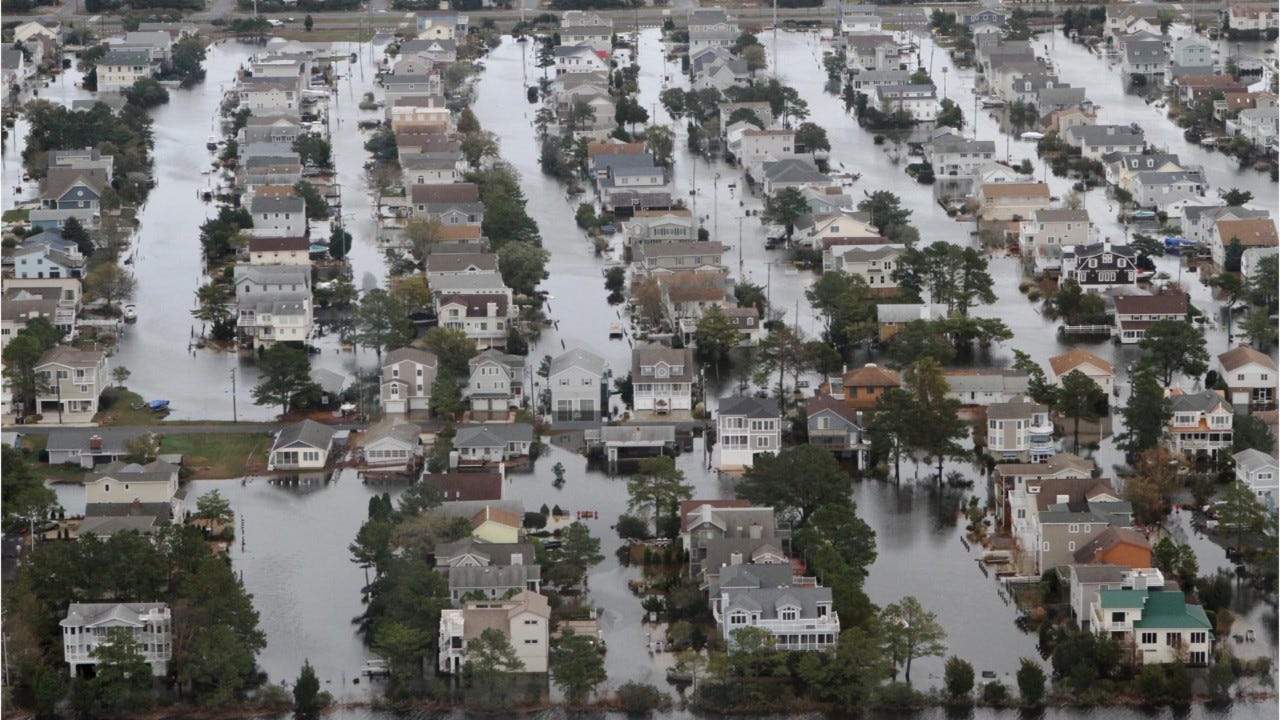
Homeowners are reeling at the new price of their flood insurance since the National Flood Insurance Program updated its rating system last month.
Pinellas County Property Appraiser Mike Twitty, Jake Holehouse of HH Insurance and Pinellas Realtor Organization Vice-President of Public Affairs Joe Farrell met with the St. Petersburg City Council last week to discuss the changes in NFIP’s Risk Rating 2.0.
The rating system is supposed to be more equitable, charging those whose homes are at greater risk more. But it could be pricing some in St. Pete out of the most affordable homes.
In St. Petersburg, 79% of homes in flood zones are not on the water. And of those, the median home price is around $225,000.
“This isn’t a high value property issue,” Twitty said. “It is the lower value properties that we’re concerned about. And those off the water are those that would be most greatest impacted.”
For years, St. Pete has been encouraging homeowners to rebuild homes at higher elevations in flood-prone areas to increase resiliency. FEMA has even offered incentive programs to help with costs. But under the new rating system, knocking down a home to rebuild higher can price an owner out of their home.
A $650,000 waterfront Coquina Key home that was knocked down and rebuilt at a higher elevation saw its insurance rate go from $484 to $3,338 annually. A non-waterfront house in Coquina Key valued at $250,000 saw its insurance rate increase from $3,665 to $5,445 annually. A non-waterfront home in Shore Acres went from $409 to $3,941.
The rates don’t increase all at once. They go up 18% each year until the full premium is reached.
“It’s almost like the flood insurance version of gentrification for a lot of folks,” Ferrell said. “You’re going to have people that are existing in their homes who are are going to not have that insurance, which is not good when a storm actually comes.”
Ferrell said the most impacted homes are those non-waterfront properties under $400,000, which also happen to be in the shortest supply in the city. That creates a barrier of entry on the lower income side and limits the creation of generational wealth.
It also creates an investor-driven market. Cash buyers don’t have to purchase flood insurance. And if it’s not affordable, they won’t pick it up. And Ferrell said that’s not good for the resiliency of a city surrounded by ever-encroaching bodies of water.
The NFIP operates under the Federal Emergency Management Agency. The NFIP was created by Congress in 1968 and offers homeowners government-backed flood insurance. Since its inception, flood insurance rates were based on being above or below the base level of a flood map.
Now, FEMA uses more specific, case-by-case analysis to determine rates. According to FEMA, 20% of homeowners will see a reduction. But the other 80%, including those in some of St. Pete’s more affordable homes, are already seeing wild increases.
“We here on City Council — the administration and the Mayor — talk a lot about affordable housing,” Council Chair Ed Montanari said. “We’re going down a path of pricing people out of their homes.”
Unfortunately, Holehouse said, there’s not much to do about it in the immediate term.
“This attacks every house that’s in a flood zone,” he said.
A house purchased with a government-back loan is required to carry the insurance. And NFIP covers about 90% of homes. The rest are covered by a rapidly decreasing private market. Holehouse said the state’s largest private flood insurer isn’t accepting new policies in St. Pete.
Council Member Brandi Gabbard said 93% of her district is in a flood zone. She plans to meet with FEMA and NFIP administrators to discuss how to address the drastic increase in costs.
“We are a community that is committed to resiliency,” she said. “Why is that not being reflected. Why are we not being rewarded for that? … Without being able to incentivize our residents with these lower rates it becomes a much harder obstacle to overcome.”




3 comments
Stan Parsons
November 12, 2021 at 12:06 pm
For what its worth, St Pete may be addressing the long standing and perpetually ignored reality’s of watershed management better than any community in the Country.
“Climate Change” just makes the process quicker.
Eugene
November 16, 2021 at 11:15 am
As an Insurance Professional, I agree with the artical, The new rating system is a step in the wrong direction. Even the zones that do not require a flood policy purchase are going up. What do you think those people will do? Drop the coverage or course. If its not required, why pay more for it. The reason we sell the lower price, non required policies, is to try and off set some of the money paid to those in the high risk areas. That cash flow is going to go away.
Stan Parsons
November 17, 2021 at 1:06 pm
Unfortunately the Flood zones are so useless that they are no longer even a factor in the NFIP rate calculation.
Flood zones by law determine when you are required to purchase Flood insurance. Since they were integral to rating, any policy with an increased renewal premium will still be capped. If someone were to obtain Flood coverage from an insurer the will be spared the Fees and Surcharges on top of the premium on every NFIP policy irregardless of the property risk. Shop around. Real insurance products are are coming to market that provide better coverage than Federal Law allows
Comments are closed.